Ever wonder where famous coin portraits came from? (Eye Candy Alert ... Sunglasses Required!)
 WingedLiberty1957
Posts: 2,999 ✭✭✭✭✭
WingedLiberty1957
Posts: 2,999 ✭✭✭✭✭
A combination of some eye candy of some my my toner examples and some history of where famous coin portraits came from (or their inspiration).
I hope I have this information roughly correct, I tried to research a bit on the fly, but cannot guarantee 100% accuracy, but hopefully close.
All the coin images are PCGS TrueView photos shot by Phil Arnold, with a bit of levels adjustment in Photoshop to help bring out the detail.
Coins are from WingedLiberty's "Color of Money" Collection.
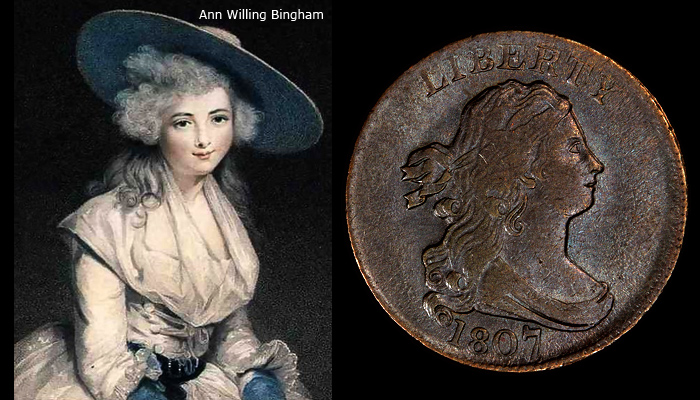
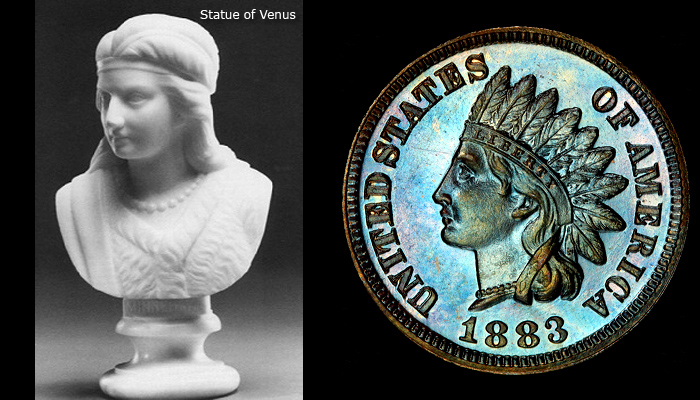
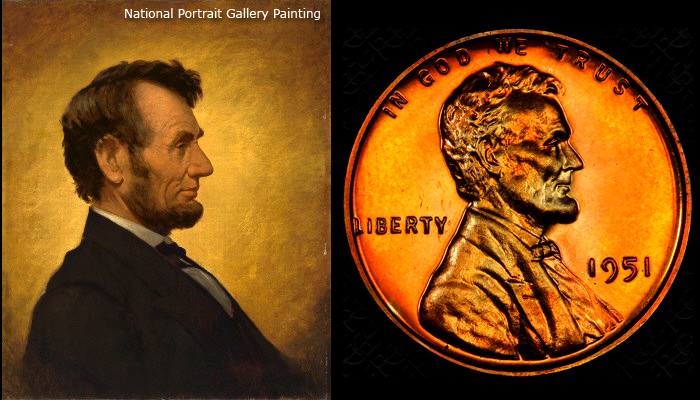


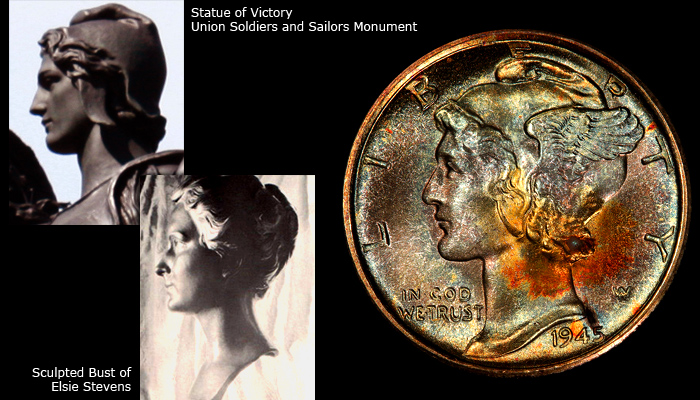
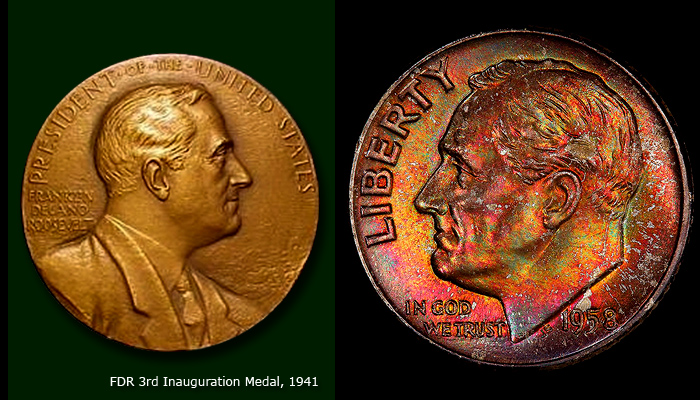
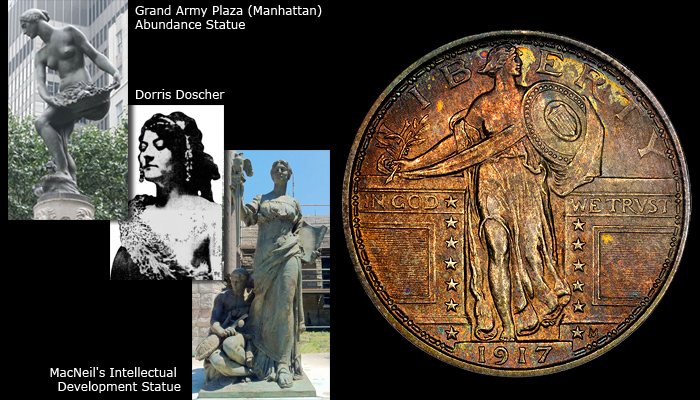


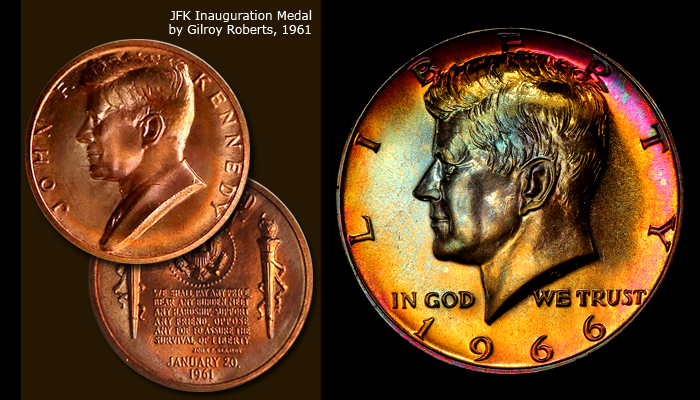

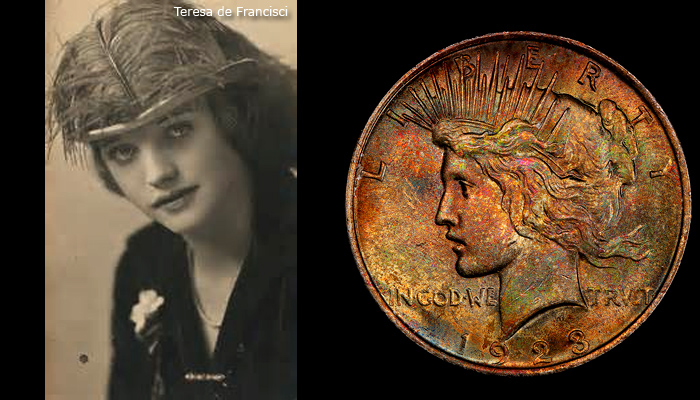

I hope I have this information roughly correct, I tried to research a bit on the fly, but cannot guarantee 100% accuracy, but hopefully close.
All the coin images are PCGS TrueView photos shot by Phil Arnold, with a bit of levels adjustment in Photoshop to help bring out the detail.
Coins are from WingedLiberty's "Color of Money" Collection.














21
Comments
*One day.....
Cool thread, maybe others could add other series to the thread in the same spirit.
Looking for Top Pop Mercury Dime Varieties & High Grade Mercury Dime Toners.
Cool pictures, but I thought it was pretty well established that the 1785 bust by Houdon was the inspiration for the Washington Quarter design?
The Gilbert Stuart painting you have pictured is that used as the inspiration for the $1 bill.
-~-~-~-~-~-~-~-~-~-~-~-~-~-~-~-~-~-~-~-~-~-~-~-~-~-~-~-~-~-~-~-~-~-~-~-~-~-~-~-~-~-~-~-~-~-~-~-~-~-~-~-~-
My sets: [280+ horse coins] :: [France Sowers] :: [Colorful world copper] :: [Beautiful world coins]
-~-~-~-~-~-~-~-~-~-~-~-~-~-~-~-~-~-~-~-~-~-~-~-~-~-~-~-~-~-~-~-~-~-~-~-~-~-~-~-~-~-~-~-~-~-~-~-~-~-~-~-~-
Cool pictures, but I thought it was pretty well established that the 1785 bust by Houdon was the inspiration for the Washington Quarter design?
You very well could be 100% correct on that one!
I will "redo" this image if I can verify that.
This 1785 Bust ?
My Coin Blog
My Toned Lincoln Registry Set
Cool pictures, but I thought it was pretty well established that the 1785 bust by Houdon was the inspiration for the Washington Quarter design?
You very well could be 100% correct on that one! ...
I might "redo" this image if I can verify that.
It is in Vermule's Numismatic Art in America.
Cool pictures, but I thought it was pretty well established that the 1785 bust by Houdon was the inspiration for the Washington Quarter design?
You very well could be 100% correct on that one!
I will "redo" this image if I can verify that.
This 1785 Bust ?
Yes, that's it!
-~-~-~-~-~-~-~-~-~-~-~-~-~-~-~-~-~-~-~-~-~-~-~-~-~-~-~-~-~-~-~-~-~-~-~-~-~-~-~-~-~-~-~-~-~-~-~-~-~-~-~-~-
My sets: [280+ horse coins] :: [France Sowers] :: [Colorful world copper] :: [Beautiful world coins]
-~-~-~-~-~-~-~-~-~-~-~-~-~-~-~-~-~-~-~-~-~-~-~-~-~-~-~-~-~-~-~-~-~-~-~-~-~-~-~-~-~-~-~-~-~-~-~-~-~-~-~-~-
My Coin Blog
My Toned Lincoln Registry Set
Great post! Thank you!
+1
It is interesting to see just how much Lincoln's nose was changed by Brenner.
I was thinking the same thing.
That's pretty neat. Awesome coins!
+1!
My YouTube Channel
It is interesting to see just how much Lincoln's nose was changed by Brenner.
The ears are smaller as well.
Excellent work, now if you can show Martha Washington with the 1792 h10c it will be complete
Was that coin definitely Martha? I thought there was some controversy about that?
My Coin Blog
My Toned Lincoln Registry Set
Invitations were sent out to 23 prominent artists and sculptors to design the new coin. The requirements stated that the obverse must depict Sacagawea and the reverse must depict an eagle to represent freedom and peace.
Glenna Goodacre used Randy'L He-dow Teton as the model for the bust of Sacagawea. Randy'L He-dow Teton attended the nearby University of New Mexico and is also part of the American Indian Shoshone tribe just as Sacagawea.
Photo above shows the Sacagawea Dollar design unveiled at the White House.
Left to Right: First Lady Hillary Clinton, Sacagawea Model Randy'L He-dow Teton, Designer Glenna Goodacre.
My Coin Blog
My Toned Lincoln Registry Set
K
Lance.
I don't recall see one or two of them before.
"If I say something in the woods and my wife isn't there to hear it.....am I still wrong?"
My Washington Quarter Registry set...in progress
is it being attributed to Roty's "sower" design? For discussion's sake it appears to me that the likeness of Ms. Steven's head and the likeness of Roty's French design were combined.
Again, I appreciate your post.
Jim
When a man who is honestly mistaken hears the truth, he will either quit being mistaken or cease to be honest....Abraham Lincoln
Patriotism is supporting your country all the time, and your government when it deserves it.....Mark Twain
From an internet search ...
"Weinman began working on some of his first commissions, which included an award medal that would be given to participants at the Louisiana Purchase Exposition of 1904 in St. Louis. This medal was struck and produced at the Philadelphia Mint. This coin was an early predecessor of the Walking Liberty half dollar coin that he would be designing a few years later, as both have similar designs of a walking liberty and rising sun with rays. The dime that Weinman designed became known as the Mercury Dime, and his half dollar became known as the Walking Liberty Half Dollar. The designs of both of these coins were actually inspired by a real person named Elsie Kachel Stevens. Weinman actually sculpted a bust of her 3 years earlier in 1913. The dime features the detailed face of Elsie Stevens while the Walking Liberty half dollar features part of her full figure on the half dollar."
My Coin Blog
My Toned Lincoln Registry Set
"Keep your malarkey filter in good operating order" -Walter Breen
Dead Cat Waltz Exonumia
"Coin collecting for outcasts..."
Thanks for the correction, esteemed members!
Almost looks like he used the Houdon bust with hair (wig) from the Stewart painting.
HH
1947-P & D; 1948-D; 1949-P & S; 1950-D & S; and 1952-S.
Any help locating any of these OBW rolls would be gratefully appreciated!
mark
Fellas, leave the tight pants to the ladies. If I can count the coins in your pockets you better use them to call a tailor. Stay thirsty my friends......
Almost looks like he used the Houdon bust with hair (wig) from the Stewart painting.
HH
I agree. On the bust the hair looks chopped on the side. (I wonder if part of the hair on the bust broke off at some point in the past?)
My Coin Blog
My Toned Lincoln Registry Set
(By the way, this is a PR67 (not mine) with one of the best strikes I've ever seen in that series)
My Coin Blog
My Toned Lincoln Registry Set
It is interesting to see just how much Lincoln's nose was changed by Brenner.
I was thinking the same thing.
Ditto. And a nicely done presentation!
RMR: 'Wer, wenn ich schriee, hörte mich denn aus der Engel Ordnungen?'
CJ: 'No one!' [Ain't no angels in the coin biz]
My Coin Blog
My Toned Lincoln Registry Set
(Coin shown is Simpson's stunning PR68)
The Victory Statue (or Winged Victory) was also a strong contributor ... it was used as part of the Sherman Memorial. I have seen that Victory Statue as a stand-alone statue in other venues though. I might be misrepresenting this info ... so correct me if I am mistaken.
My Coin Blog
My Toned Lincoln Registry Set
BST transactions: dbldie55, jayPem, 78saen, UltraHighRelief, nibanny, liefgold, FallGuy, lkeigwin, mbogoman, Sandman70gt, keets, joeykoins, ianrussell (@GC), EagleEye, ThePennyLady, GRANDAM, Ilikecolor, Gluggo, okiedude, Voyageur, LJenkins11, fastfreddie, ms70, pursuitofliberty, ZoidMeister,Coin Finder, GotTheBug, edwardjulio, Coinnmore, Nickpatton, Namvet69,...
Stunning presentation!!
- Bob -

MPL's - Lincolns of Color
Central Valley Roosevelts
On June 20, 1945, about four million people jammed onto the streets of New York City for a World War II victory parade. Buried in the the crowd was a young artist and junior U.S. Mint engraver, Frank Gasparro (1909-2001) hoping for a glimpse of his hero, 5-Star General Dwight D. Eisenhower. Towards the end of the parade, Frank did get a brief glimpse of his hero, and that one fleeting moment changed future U.S. numismatic history.
As soon as he returned to the U.S. Mint in Philadelphia, Gasparro made a sketch that captured Eisenhower's strong and determined gaze. Twenty-Six years later that sketch became the inspiration for one of America's most legendary modern coins – the Eisenhower Dollar.
The story of the Eisenhower Dollar starts with the Apollo 11 space mission. On July 20, 1969, Apollo 11 astronaut Neil Armstrong became the first person to set foot on the moon. With America caught up in "space fever", the U.S. Mint looked for a way to honor this world-changing moon-landing event and it needed a coin as impressive as the achievement itself. So the one-dollar coin was resurrected. That large coin size/denomination hadn't been used since 1935, the final year of the Peace Silver Dollar.
At the same time, the Mint wanted to honor Dwight D. Eisenhower, who died shortly before Apollo 11. Since as president, Eisenhower helped create NASA -- and without his vision, the moon landing might never have happened -- Eisenhower and Apollo 11 became the perfect match for this coin. So Frank Gasparro began work on mating his old 26 year old sketch of Eisenhower with the Apollo 11 Mission Insignia to create this new coin.
The Eisenhower Dollar was minted from 1971 through 1978. However there are no Eisenhower Dollars dated 1975, since that entire year was used to strike the 1976 bicentennial dollars which had a special reverse featuring the Liberty Bell. Special 40% Silver Ikes were struck for Collectors at the San Francisco mint throughout the series. These coins were basically unloved and little used during their short run, but have been undergoing a collector resurrection in recent years due to their large size, low cost, and short run making collecting the complete set a relatively low cost endeavor.
However it should be noted that extremely high-grade business strikes are quite rare and expensive due to their low field populations -- PCGS lists MS67 business strikes as having a fair market value of between $4,000 and $15,000 each, depending on the year. High grade proofs remain very low priced however.
Frank Gasparro working on a proposed Liberty Head Design Dollar Coin in 1977
My Coin Blog
My Toned Lincoln Registry Set
PCGS Registries
Box of 20
SeaEagleCoins: 11/14/54-4/5/12. Miss you Larry!
Coin is a PR66BN (not mine) of provenance "Larry Shepherd Collection".
From internet searches ...
The two-cent piece was designed by James B. Longacre and was produced for circulation from 1864 to 1872 and for minted for collectors only in 1873. Mintages steadily decreased each year.
The obverse design is a Longacre version of the Great Seal of the United States. His design focuses on the shield, or escutcheon, as a defensive weapon, signifying strength and self-protection through unity. The upper part of the shield (or "chief") symbolizes Congress, while the 13 vertical stripes (or "paleways") represent the states. Consequently the entire escutcheon symbolizes the strength of the federal government through the unity of the states.
The crossed arrows represent nonaggression, but imply readiness against attack. The laurel branches, taken from Greek tradition, symbolize victory. In heraldic engraving, vertical lines represent red, clear areas white and horizontal lines blue, thus the escutcheon is (in theory) colored red, white, and blue and is meant to evoke the American flag.
Art historian Cornelius Vermeule deemed the two-cent piece "the most Gothic and the most expressive of the Civil War" of all American coins. "The shield, arrows, and wreath of the obverse need only flanking cannon to be the consummate expression of Civil War heraldry."
Longacre's two-cent piece was the first coin inscribed with "In God We Trust". The motto was popularized by the new coin; on March 3, 1865 Congress passed legislation ordering its use on all coins large enough to permit it. Since 1938, "In God We Trust" has been used on all American coins.
The background of the motto (from what I have read) is as follows. In late 1861, Reverend Mark Watkinson of Pennsylvania, wrote to Treasury Secretary Chase and Mint Director Pollock, proposing that some reference to God be placed on the coinage "in this time of Civil War". Several motto's were considered, including "God Our Trust" and "God and Our Country". He later wrote "the motto on each, such as all who fear God and love their country, will approve." Chase responded that it should be changed to read: "IN GOD WE TRUST." Pollock had been inspired by The Star Spangled Banner, a later stanza of which includes the line, "And this be our motto, In God Is Our Trust". Chase may have also been influenced in his decision by the motto of his alma mater, Brown University, which read In Deo Speramus (In God We Hope).
My Coin Blog
My Toned Lincoln Registry Set
What/who was the inspiration for the barber half/quarter/dime?
Really sketchy info on the Barber coinage inspiration. Best I can come up with is the design was a modified version of what was being used in France. I have to admit the nose and chin are very similar, but I think the ultimate "tell" is the lips (which are both really unusual and nearly identical on the two coins). If anyone knows anything more or anything different please post!
My Coin Blog
My Toned Lincoln Registry Set
My Coin Blog
My Toned Lincoln Registry Set